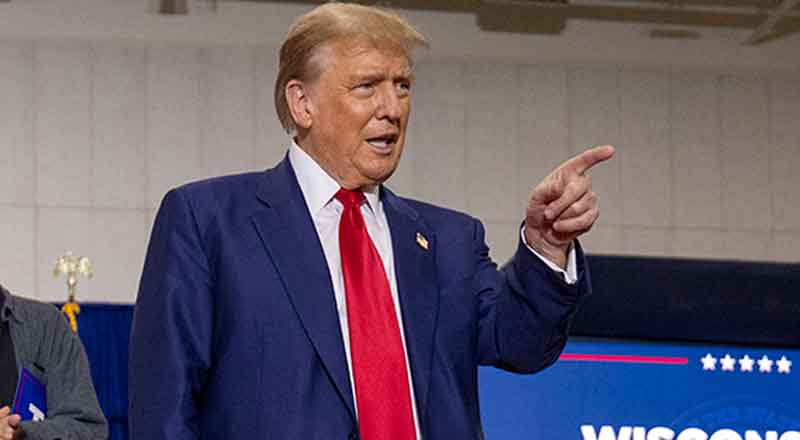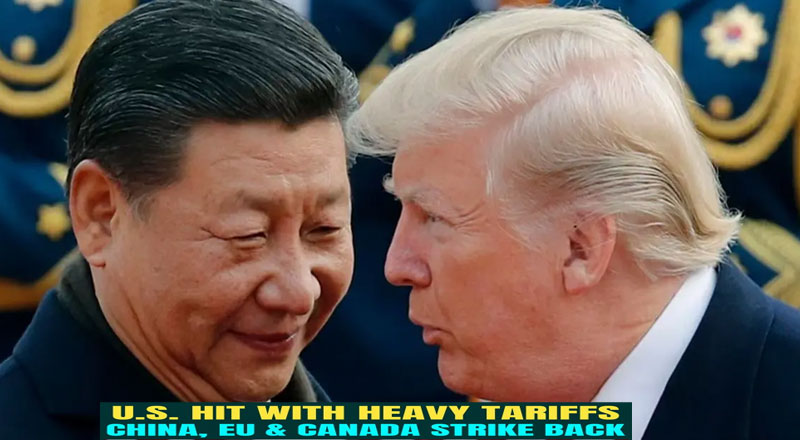A New Trade Flashpoint
In a dramatic shift in US trade policy, President Donald Trump has announced a sweeping 26% reciprocal tariff on Indian imports, a move that has sent ripples through global markets. The announcement, made on April 2, 2025, was framed by Trump as a crucial step in reclaiming American economic strength. While this decision comes amid ongoing US-India negotiations for a bilateral trade agreement, Indian officials have downplayed its impact, calling it a “mixed bag” rather than a setback. The Indian commerce ministry has now launched an in-depth analysis to assess the tariff’s consequences and potential countermeasures.
Trump’s ‘Liberation Day’ Announcement
Speaking from the Rose Garden at the White House, Trump declared April 2 as “Liberation Day,” celebrating what he described as a turning point in US economic policy. Holding up a chart displaying tariffs imposed by various countries on American goods, he justified the new measures as a necessary correction against trade imbalances. According to the chart, India levies a total of 52% tariffs on US products, including currency manipulation and trade barriers. The newly announced tariff will see India paying 26%—a ‘discounted’ reciprocal tariff.
This tariff rollout will occur in two phases: an initial 10% tariff on all imports entering the US starting April 5, followed by an additional 16% tariff on April 10, bringing the total to 26%.
Understanding Reciprocal Tariffs
Reciprocal tariffs are duties imposed by one country in response to tariffs charged by another. Essentially, they function on a tit-for-tat basis, seeking to counteract economic disadvantages created by higher import taxes. Trump’s administration has justified these tariffs as a means to ensure fairness in trade relations.
India, among several other nations, has been accused by Trump of imposing disproportionately high duties on American goods, prompting this countermeasure. While this move is positioned as a necessary step to protect American industries, the actual economic impact remains uncertain.
India’s Response: A Strategic Review
Following Trump’s announcement, the Indian government has begun analyzing the implications of the tariff. A senior official from the commerce ministry emphasized that India is not viewing this as a major setback. Instead, the government sees it as part of ongoing trade negotiations, suggesting that the tariffs could be reconsidered if India addresses certain US concerns.
Despite these tensions, both countries are still engaged in discussions to finalize the first phase of a bilateral trade agreement by September-October 2025. India hopes that diplomatic negotiations can help minimize the impact of the new tariffs while securing mutually beneficial trade terms.
Global Reactions: A Divided Response
The announcement has sparked mixed reactions across the globe, particularly in Europe, where several leaders have expressed concerns about rising trade barriers.
Italy: Prime Minister Giorgia Meloni criticized the US decision, calling it “wrong” and warning that it could lead to a damaging trade war that benefits competing global powers.
Ireland: Prime Minister Micheál Martin labeled the tariffs as “deeply regrettable” and highlighted the extensive daily trade between the EU and the US.
Spain: Prime Minister Pedro Sánchez vowed to protect Spain’s businesses and reaffirmed his commitment to global trade.
Sweden: Prime Minister Ulf Kristersson warned against growing trade barriers, stating that cooperation with the US should be prioritized over conflict.
European Parliament: Manfred Weber, president of the European People’s Party (EPP), denounced the tariffs, calling April 2 “Resentment Day” rather than “Liberation Day.”
Australia: Prime Minister Anthony Albanese took a different stance, arguing that the tariffs would ultimately hurt American consumers. Australia, he stated, would not impose retaliatory tariffs.
The US Perspective: ‘Sit Back and Take It’
US Treasury Secretary Scott Bessent issued a stark warning to countries considering retaliation. “If you retaliate, there will be escalation. Sit back, take it in,” he told Fox News. His statement signals the Trump administration’s intent to maintain a firm stance on trade, discouraging countermeasures that could lead to an all-out trade war.
Analyzing the Impact: What Does This Mean for India?
The impact of the reciprocal tariffs on India will depend on several factors:
- Economic and Export Consequences – India exports a range of products to the US, including pharmaceuticals, textiles, and IT services. While some industries may absorb the tariffs with minimal disruption, others could face significant cost increases.
- Political and Diplomatic Implications – Given that India and the US are negotiating a trade agreement, the timing of these tariffs adds a layer of complexity to ongoing discussions. India may need to make strategic concessions to mitigate further trade friction.
- Potential Retaliation – While India has yet to announce any counter-tariffs, it has historically responded to US trade measures with its own levies. If diplomatic negotiations fail, India could impose tariffs on US goods, potentially escalating tensions further.
Navigating the Trade Dispute
For India, the focus now is on assessing the economic impact and formulating a response that minimizes damage while keeping diplomatic channels open. With bilateral trade negotiations underway, India may seek a middle ground that addresses US concerns while safeguarding its own industries.
For the US, Trump’s move represents a broader push toward aggressive trade policies aimed at protecting American industries. However, whether these measures will lead to long-term economic gains remains debatable. If major trade partners retaliate, the US could face disruptions in its own supply chains, counteracting any short-term benefits.
A ‘Mixed Bag’ with High Stakes
While the Indian government has refrained from labeling Trump’s reciprocal tariff as a setback, the reality is that this decision introduces new uncertainties in trade relations between the two nations. The true impact will unfold over the coming months as both sides navigate trade negotiations.
India’s response will be crucial in determining whether this move sparks a broader trade conflict or remains a manageable hurdle. As the world watches, the outcome of this standoff will not only shape US-India economic ties but also set a precedent for global trade dynamics in the years to come.
(With inputs from agencies)





